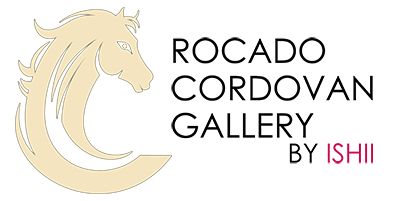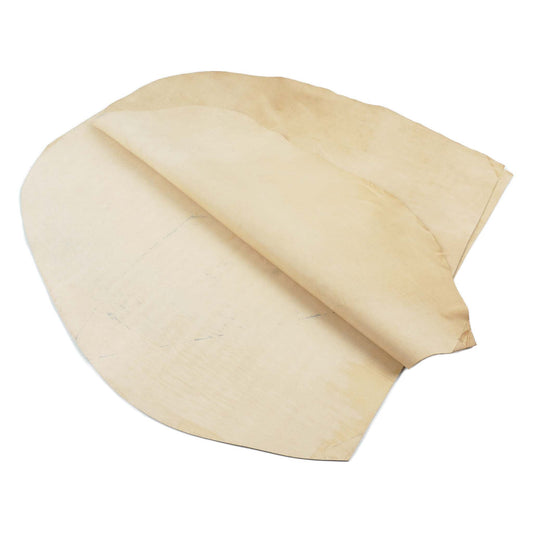About Rocado

Roberto Gulbicki. Rocado's shell cordovan is all made possible thanks to his great effort and passion.
The origin
Rocado was founded in Tuscany, Italy in 1982 by Dorota Gulbicki. The company name Rocado comes from the initials of her son ROberto, the daughter CAterina, and DOrota herself. During the early years Rocado mainly dealt with cow raw hides but eventually expanded business to vegetable crusts of cow shoulders and bellies. After her son Roberto, an Italian with Polish background, joined the company he started sourcing horse raw hides in Poland, which is known for its best quality and most stable horse raw hide production in the world. Roberto then extended Rocado's business by supplying Polish horse raw hides to tanners in Italy, Japan, and USA.

The office of Rocado stands in the center of Santa Croce sull'Arno in Tuscany, where many of best Italian tanners of vegetable leather are located.
Developing shell cordovan
It all started when Roberto contacted us (Ishii) trying to sell his horse raw hides. Unfortunately we had to turn him down as we only dealt with finished leather and not raw hides. But then we asked him, if he had the best horse raw hides in his hands why not produce shell cordovan himself? That's how Roberto's endless pursuit for the perfect shell cordovan began.
Rocado's biggest advantage is that it can source raw material by itself as usually raw hide dealers and tanners work separately. If a raw hide dealer wants to start making finished leather, it means he would have to build his own tanner from scratch. That's basically what Roberto did and it shows how devoted he was to make this work.
This is how Rocado's cordovan took off but needless to say it was not an easy start. In the first years Rocado's cordovan was far from perfection or rather it was not even up to the standard that we could sell in the market. So after each delivery we sent Rocado a list of points that needed to be improved and after a few months they sent us a better version with three points improved and two new problems. It was tough years for Rocado with a lot of time and investment but eventually they have succeeded to make their own shell cordovan in high and stable quality as you see today. No mater how long our list of improvements was, Roberto never gave up and took his time to take care of every point. Today's success of Rocado largely owes to Roberto's humbleness and inquisitiveness.
Until Rocado came into the picture shell cordovan was mainly produced by a few tanners in the USA and Japan and not many people even knew about it in the other parts of the world. Now after the success of Rocado and its renowned shell cordovan, other European tanners also started to develop their own cordovan. Robert's passion has reshaped the global market of shell cordovan.

Rocado's cordovan in the early days.
As you can see the quality was very different from that of today.
The art of Rocado
We call it shell cordovan but it is no different from cow leather or sheep leather in that a byproduct from meat production transforms into leather through tanning process. So just like any leather the production of shell cordovan starts with tanning. Tanning of cordovan is processed carefully step by step, taking long time to preserve the rigid fibers of shells. Usually tanning in chrome leather takes just a day but Rocado spends a month to repeat tanning and greasing to let the crusts age in the right way. After tanning there is one extra step for cordovan which the production of normal leather does not have: shaving. Shell layers are hidden underneath the grain so they need to be shaved out and be exposed. Just like scrubbing an ore to recover diamond, shaving horse culatta (buttock) requires great time and skills. But only after this process horse leather crusts can become shell cordovan.
So after a month we finally have shell cordovan but it is still in crust and unfinished. How do you turn this blank canvas into artwork? That is where Rocado comes in (again). There are many ways to finish leather but in terms of dyeing it can be broadly divided into two categories: aniline and pigment. Aniline dyes get absorbed into leather but pigment dyes have much bigger particles and therefore they stay on the surface. Pigment makes its own layer on top so it is good for covering up defects or making a uniform color but on the other hand it loses the leather's natural look and touch. Tanners worldwide need to decide which dye to use (or sometimes mix them) depending on the material they use and the target products. Rocado uses pure aniline only, which means their leather will have different tones and shades in different pieces. But because their cordovan is finished with just aniline dyes, you can enjoy the natural look and touch that the material has. After all shell cordovan is leather and a natural product so every piece is supposed to be different. There is an underlying message in Rocado's products that they want users to experience the true leather instead of covering up marks and defects.
After dyeing shell cordovan is sent to the next step which is glazing. It is a process where a shell is repeatedly rubbed with a fast moving glass cylinder to flatten the surface and gain very high shine. The cylinder is moved by a machine but only a small area is rubbed in one stroke so a shell needs to be moved by hand between each stroke to make the piece evenly shiny. With just one wrong timing and a shell can get caught in the fast moving machine and it can destroy the whole piece so it is a nerve-racking and yet a crucial process in cordovan making.
Shell cordovan may be small but it requires multiple procedures that require time and technique. The depth in shade that can only be made with pure aniline, the glaring shine from glazing, and then the soft and warm touch of leather from the tanning with special mix of grease and wax.These all contribute to the final outcome of shell cordovan, delicately crafted and mastered by Rocado.
-
Additional Rocado Stamps
Regular price $8.00 USDRegular priceUnit price / per -
Carbon interlining sheet (from 1m)
Regular price $17.50 USDRegular priceUnit price / per -
 Sold out
Sold outCordovan Classic Color Card
Regular price $15.00 USDRegular priceUnit price / per




